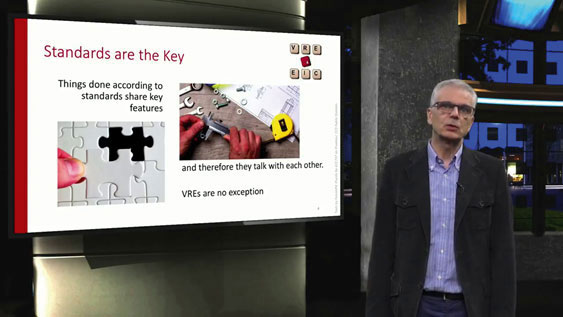VRE4EIC, an H2020 European research project managed by ERCIM, has released a series of video tutorials. Short online videos are explaining how to build a Virtual Research Environment (VRE) or to enhance an existing VRE. VRE4EIC has developed a reference architecture and software components for building VREs.

Screenshot from the tutorial video on architecture design and implementation.
This software developed in the frame of VRE4EIC, called e-VRE, provides a comfortable, homogeneous interface for users by virtualising access to the heterogeneous datasets, software services and resources of the e-RIs, and provides collaboration/communication facilities for users to improve research communication. It also has the capability of bridging across existing e-RIs (e-Research Infrastructures).
With a series of tutorial videos, scientists and engineers can now learn how to build a VRE or enhance the functionalities of an existing VRE. Experts explain in a way easy to understand the different items and aspects of e-VRE: Keith Jeffery from ERCIM gives an introduction “What is a Virtual Research Environment”. Carlo Meghini from CNR gives insight in e-VRE architecture design & implementation”, explaining the architecture as well as set of software systems and tools of e-VRE. Laurent Remy from euroCRIS teaches how to manage metadata in Virtual Research Environments. Maria Theodoridou, FORTH, presents the VRE4EIC Metadata Portal. The first part of her tutorial introduces the core components and explains how to construct a basic query. The second part demonstrates advanced features of the portal: how to use the geographical map, how to expand basic into complex queries, and how to store and load queries. Further videos explain how to use e-VRE to enhance an existing VRE. Daniele Bailo from the Italian National Institute for Geophysics and Volcanology (INGV) explains how building blocks (software tools) provided by VRE4EIC are enhancing an existing Research Infrastructure such as the European Plate Observation System (EPOS). Zhiming Zhao from University of Amsterdam (UvA) presents how the ENVRIPLUS community uses e-VRE architecture and building blocks for enhancing research infrastructures from different environmental and earth science domains (the video will be available in July).











